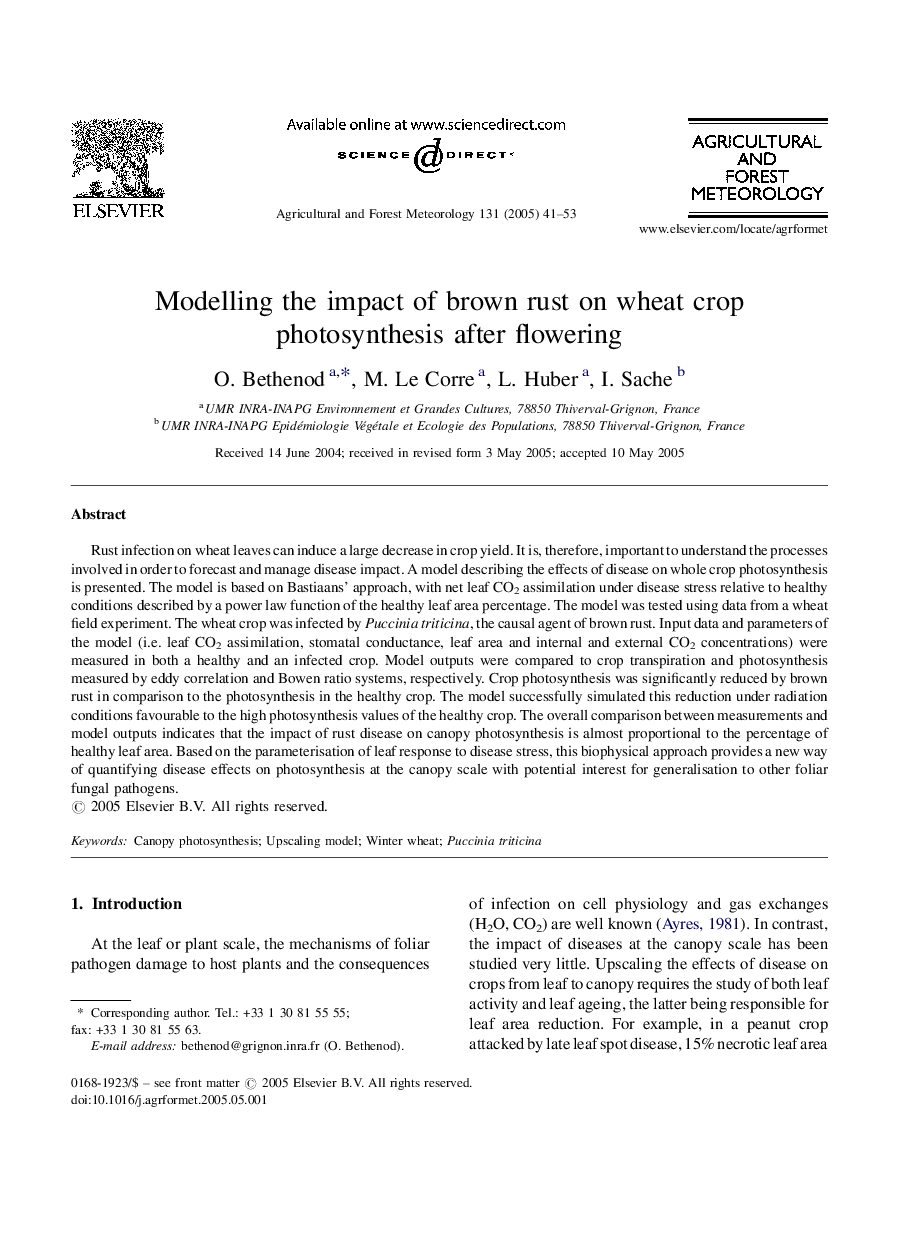| Article ID | Journal | Published Year | Pages | File Type |
|---|---|---|---|---|
| 9619485 | Agricultural and Forest Meteorology | 2005 | 13 Pages |
Abstract
Rust infection on wheat leaves can induce a large decrease in crop yield. It is, therefore, important to understand the processes involved in order to forecast and manage disease impact. A model describing the effects of disease on whole crop photosynthesis is presented. The model is based on Bastiaans' approach, with net leaf CO2 assimilation under disease stress relative to healthy conditions described by a power law function of the healthy leaf area percentage. The model was tested using data from a wheat field experiment. The wheat crop was infected by Puccinia triticina, the causal agent of brown rust. Input data and parameters of the model (i.e. leaf CO2 assimilation, stomatal conductance, leaf area and internal and external CO2 concentrations) were measured in both a healthy and an infected crop. Model outputs were compared to crop transpiration and photosynthesis measured by eddy correlation and Bowen ratio systems, respectively. Crop photosynthesis was significantly reduced by brown rust in comparison to the photosynthesis in the healthy crop. The model successfully simulated this reduction under radiation conditions favourable to the high photosynthesis values of the healthy crop. The overall comparison between measurements and model outputs indicates that the impact of rust disease on canopy photosynthesis is almost proportional to the percentage of healthy leaf area. Based on the parameterisation of leaf response to disease stress, this biophysical approach provides a new way of quantifying disease effects on photosynthesis at the canopy scale with potential interest for generalisation to other foliar fungal pathogens.
Related Topics
Physical Sciences and Engineering
Earth and Planetary Sciences
Atmospheric Science
Authors
O. Bethenod, M. Le Corre, L. Huber, I. Sache,
